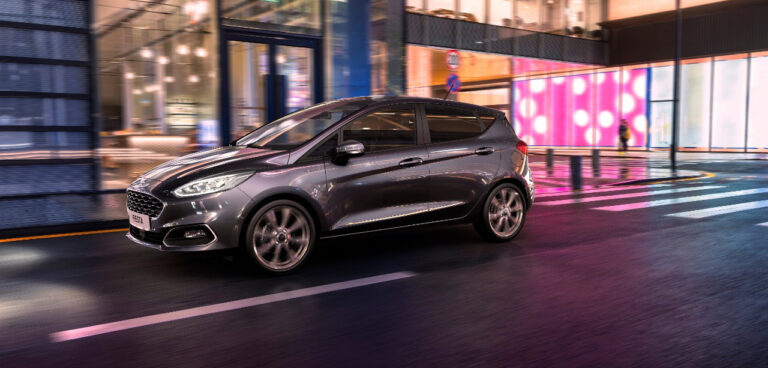Ford has announced that a new, mild-hybrid version of the already frugal Fiesta is available for customer orders. The new powertrain sees the addition of a belt-driven, integrated starter/generator (BISG) to the 1.0, I3 engine, coupled with a 48V, air-cooled lithium-ion battery pack.
The hybrid provides both torque infill and torque substitution for the turbocharged engine, with a maximum boost of 24Nm. The former of these modes has facilitated improvements to the IC engine, specifically, a reduction in compression ratio and a larger turbocharger, with the hybrid motor used to offset the resulting increase in lag. When driven flat out, the hybrid contribution ups torque output over the non-hybrid by 20Nm, giving the range topping 155ps powertrain a total of 240Nm.
In the case of torque substitution, the hybrid reduces the amount of input needed from the IC during a drive cycle, netting a 5% improvement in WLTP tests (114g/km for CO2 and 5l/100km.
Further enhancing fuel efficiency is a new cylinder deactivation system, which shuts down one cylinder in certain situations, such as when coasting or cruising with light demand on the engine.
Ford claims that the engine can disengage or re-engage one cylinder in 14ms with no compromise in performance or refinement. Additionally, a new 7-speed dual-clutch transmission can be specified on the 125ps Fiesta, which it is claimed provides an efficiency improvement of 15% over the previously available 6-speed automatic.


